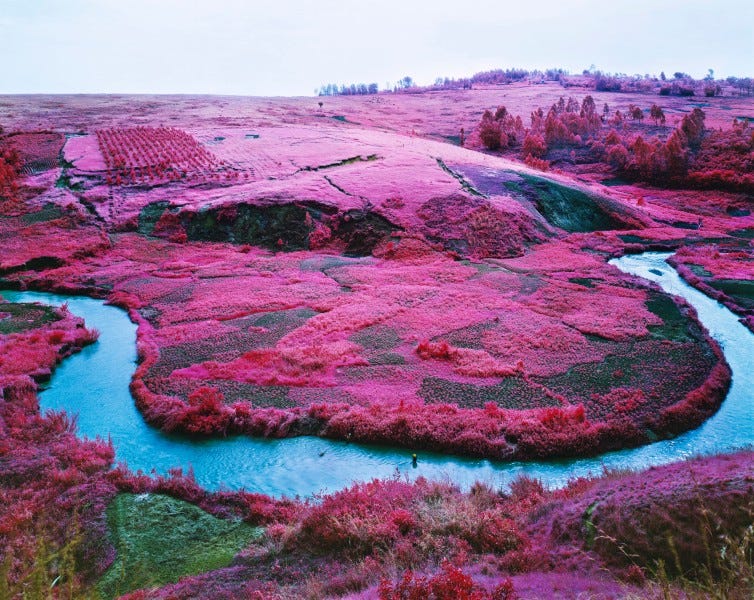Ep 40 / More Than Human Design with Justin McGuirk, Future Observatory
The director of Future Observatory and curator of the Design Museum's "More than Human" exhibition talks about widening our aperture of design.
“Every design project needs to think about how it’s affecting other species, or either limiting its impact on other species, or ideally promoting the health of other species.” - Justin McGuirk, “London exhibition explores design based on needs of nature and animals”, The Guardian
Part of the aim of this podcast project is to get humans to see themselves as part of the systems that are fundamental to life. Not the pinnacle, not the foundation, not the most important block in the Jenga stack, just one of the gang, just one member of an a variety of ecosystems.
To do that, we need to change how we think. We need to look beyond just human needs to the needs of those other things in our ecosystems.
In other words, we need to think about the more-than-human world that David Abram first talked about in 1996. Not a nature without humans, but a nature that encompass the human and the more-than-human. Not separate things divided by pavement and fences, but a connected system full of interactions.
Once we open our aperture on nature, the real work can begin.
“Where we start to move forward is when we learn to ask questions which are less concerned with ‘Are you like us?’, and more interested in ‘What is it like to be you?’” - James Bridle in “Ways of Being”
This question - ‘What is it like to be you?’ - is fundamental to the emerging field of more than human design. Thomas Nagel asked this question in his famous paper “What is it like to be a bat?” that past guest Jenny Kendler referenced in our podcast episode.
Now, if you’re anything like me, you are probably thinking - we aren’t even very good at extending empathy to fellow humans most of the time, how in the heck are we going to expand our thinking to include the more than human?
That’s the heart of the upcoming exhibit that our guest Justin McGuirk curated at the Design Museum titled “More than Human”. Using a mix of speculative art and more practical design projects, the exhibit asks us to consider a pretty provocative question:
Why has design traditionally only focused on the needs of humans, when we exist alongside billions of animals, plants and other living beings?
In this episode, we talk about that upcoming exhibit (it opens July 11, get your tickets now), the remaining value of human centered design and if Justin thinks we’ll be able to wrap our heads around considering the more than human in our design decisions.
We also talk about Justin’s role as director of Future Observatory, which is the Design Museum’s national research program for the green transition. With funding from the UKRI Arts & Humanities Research Council, it has awarded millions of pounds to support research that brings together UK design researchers, universities and businesses to catalyze the transition to net zero and a green economy.
Much of the work Future Observatory is involved in is - naturally - about creating the future. It's about approaches that aren't mainstream yet and solutions that are in the process of being realized. That can sometimes make it hard to wrap your head around the subject, but I think Justin does an amazing job of sharing his perspective on the field.
Thanks for listening -
Rick
Watch/Listen to the Episode
What We’re Reading
Future Observatory Journal - This is Future Observatory’s digital zine. The second issue focuses on the More than Human, with contributions from James Bridle and Anna Tsing.
Biomimetics is Changing the Paradigm of Beauty from WWD - We’ve touched on biomimicry in the past and this is great article on how the cosmetics and fragrance industries are looking to nature for creative and unexpected innovations.
The SuperNatural 2.0 - This past week, my wife, my cat and I drove our small electric hatchback from southeast Texas to central Indiana, totalling just under 1,000 miles. Our final stop before reaching our new home was a stay at the 21C museum/hotel in Louisville, which currently has an exhibit of art with a nature theme. Artists in the exhibition include Richard Mosse, Edward Burtynsky, and Nancy Baker Cahill, who contributed an amazing augmented reality piece.
Mother Nature Became a Music Artist on Spotify–and Won Cannes Innovation Grand Prix from AdWeek - My work outside of Ecosystem Member is in the brand strategy and marketing space, so I was excited to find out the Sounds Right initiative to raise funds for nature conservation took home a top prize at the Cannes Lions Festival of Creativity. If you want to learn more about Sounds Right, check out our episode with Madame Gandhi.








